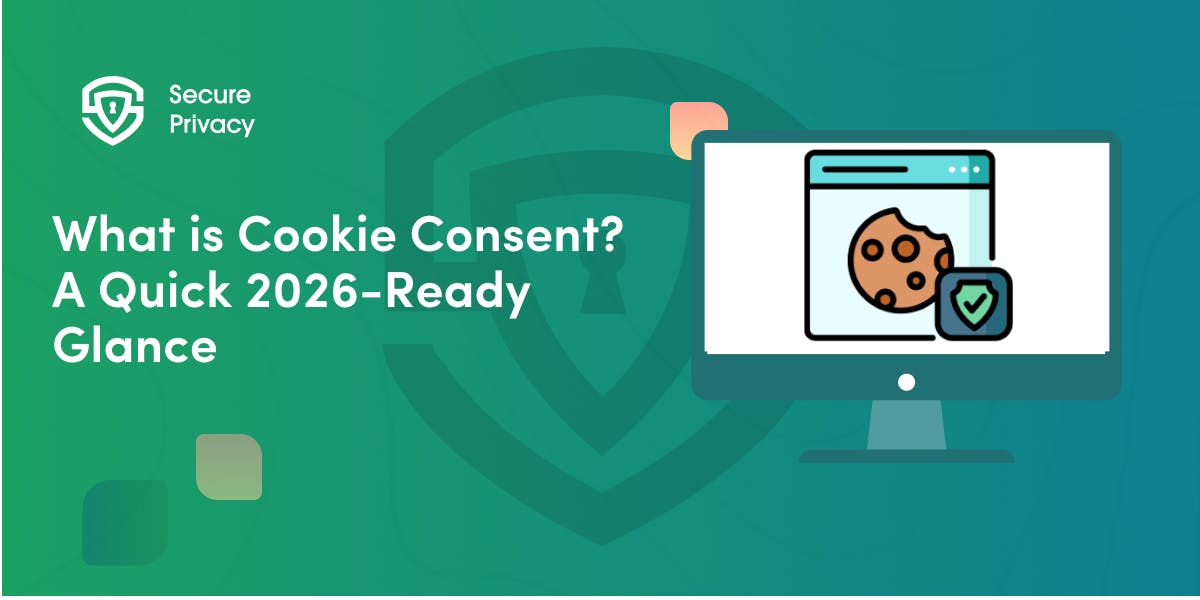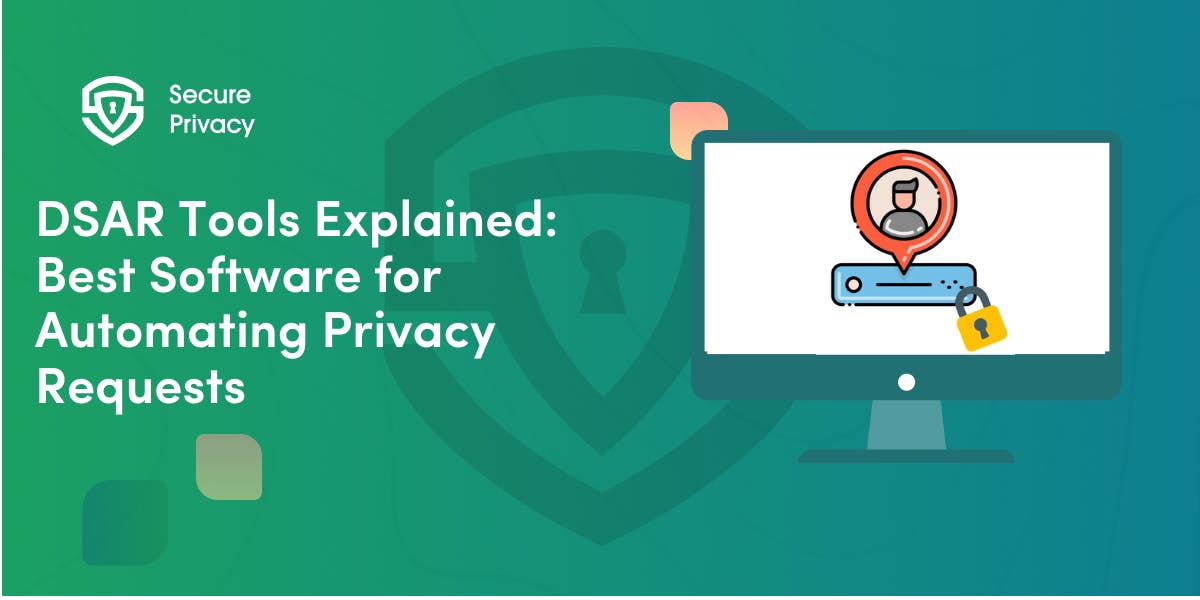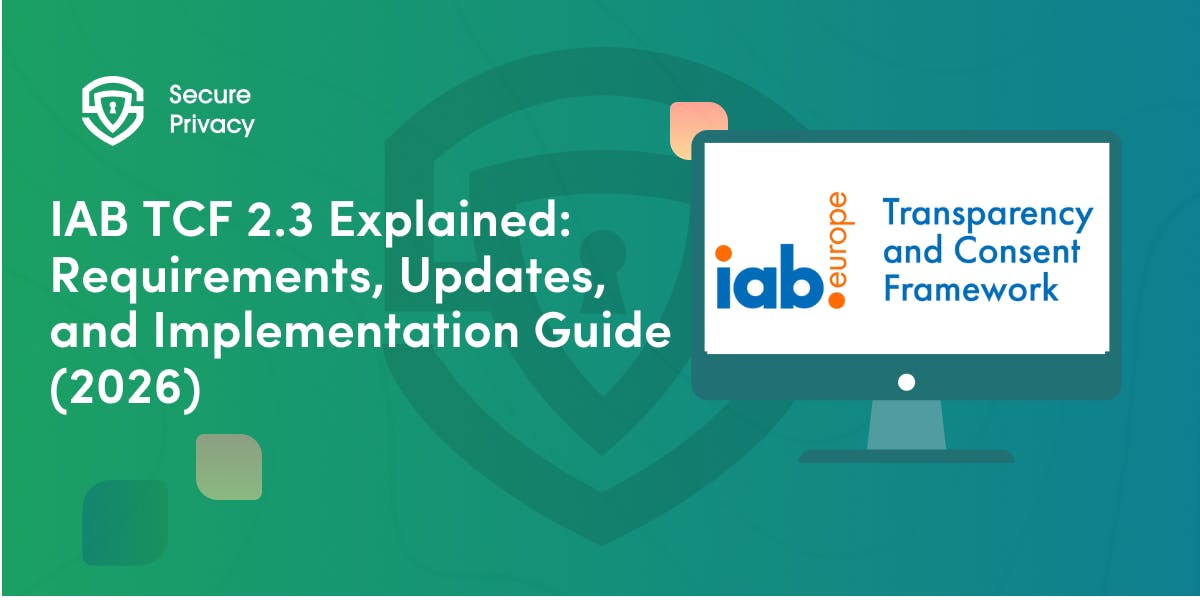Privacy Governance Dashboard for GDPR: What to Track, Why It Matters & How to Choose the Right Tool
GDPR compliance has evolved beyond static documentation and quarterly reviews. With regulatory enforcement intensifying, Data Protection Officers need real-time visibility into their organization's privacy posture to identify risks, demonstrate accountability, and maintain continuous compliance.
A privacy governance dashboard for GDPR transforms reactive compliance checking into proactive privacy program management. These centralized monitoring systems provide instant visibility into compliance status, automate reporting workflows, and enable data-driven decision making that protects organizations while supporting business objectives through effective privacy governance dashboard for GDPR implementation.
This guide explores essential dashboard metrics for, key features, and implementation strategies for 2026 that help privacy professionals visualize compliance at scale.
Why Privacy Governance Dashboards Are Critical for GDPR Success
Traditional compliance approaches cannot scale with 2026 business complexity. Spreadsheet-based tracking and periodic audits create dangerous blind spots where data processing activities change constantly.
Regulatory accountability demands continuous monitoring. GDPR Article 5(2) requires organizations to demonstrate compliance, not just achieve it. This accountability principle necessitates ongoing evidence collection that static reporting methods cannot provide effectively, making a privacy governance dashboard for GDPR essential.
Business velocity requires automated compliance oversight. Modern organizations launch new products and integrate new technologies rapidly. Manual compliance tracking creates bottlenecks that either slow innovation or increase regulatory risk, highlighting the need for a comprehensive privacy governance dashboard for GDPR.
Stakeholder expectations demand professional reporting. Executives and regulatory authorities expect sophisticated compliance reporting that demonstrates organizational maturity and professional privacy program management.
Understanding Privacy Governance Dashboards
A privacy governance dashboard for GDPR serves as the central command center for monitoring, managing, and demonstrating data protection compliance across organizational operations. These systems integrate data from multiple sources to provide comprehensive visibility through sophisticated privacy governance dashboard for GDPR capabilities.
Dashboard architecture spans three functional layers. Data collection integrates with business systems automatically. Analysis processes information to calculate KPIs and identify trends. Presentation delivers actionable insights through role-specific interfaces.
Integration with existing privacy infrastructure enables comprehensive monitoring without disrupting workflows. Leading dashboards connect with consent management platforms, data mapping tools, and incident response systems to provide unified visibility through advanced privacy governance dashboard for GDPR functionality.
Essential GDPR Metrics for Privacy Governance Dashboards
Data Subject Rights Performance Indicators
Request processing efficiency measures organizational compliance with GDPR response deadlines and quality standards. Key metrics include average response time, percentage of requests completed within 30 days, request volume trends by category, and response accuracy rates within a comprehensive privacy governance dashboard for GDPR framework.
Request fulfillment quality tracks whether responses meet GDPR completeness requirements. This includes verification rates for identity confirmation, completeness scores for data access responses, and follow-up resolution for correction requests.
Records of Processing Activities (RoPA) Compliance
RoPA completeness tracking monitors whether all data processing activities have appropriate documentation. Essential metrics include percentage of processing activities documented, data flow mapping completeness, and legal basis verification status, all integrated within a robust privacy governance dashboard for GDPR system.
RoPA currency monitoring ensures processing records remain accurate as business operations evolve. Track last update dates, change notification workflows, and discrepancy identification between documented and actual processing activities.
Data Protection Impact Assessment (DPIA) Performance
DPIA completion rates track whether high-risk processing activities receive appropriate assessment coverage. Measure total DPIAs completed, pending assessments for new projects, and percentage of high-risk activities with current DPIAs through effective privacy governance dashboard for GDPR monitoring.
Risk mitigation effectiveness monitors whether DPIAs successfully identify and address privacy risks. Track risk scores before and after mitigation measures and implementation rates for recommended controls.
Consent Management Analytics
Consent collection performance measures the effectiveness of consent mechanisms across different channels and jurisdictions. Track consent rates by geography, platform, and consent type while monitoring user experience metrics within your privacy governance dashboard for GDPR implementation.
Consent quality assurance ensures collected consent meets GDPR standards for being freely given, specific, informed, and unambiguous. Monitor consent withdrawal rates, granularity of consent choices, and evidence quality for regulatory demonstrations.
Vendor Risk and Third-Party Management
Data Processing Agreement (DPA) coverage tracks whether all vendors processing personal data have appropriate contractual protections. Monitor signed agreement percentages, agreement currency, and compliance with standard contractual clauses through comprehensive privacy governance dashboard for GDPR oversight.
Vendor risk assessment completion ensures third-party privacy risks receive appropriate evaluation. Track assessment completion rates, risk scoring distributions, and remediation activities for identified vulnerabilities.
Privacy Training and Incident Response
Training completion tracking measures whether personnel receive appropriate privacy education. Monitor completion rates by department, role-specific training participation, and assessment scores through integrated privacy governance dashboard for GDPR analytics.
Incident detection and response timing measures organizational capability to identify and respond to privacy incidents promptly. Track detection timeframes, initial response times, and escalation procedures within your privacy governance dashboard for GDPR monitoring system.
Privacy Governance Dashboard Design and Implementation
Executive Leadership Dashboard Components
Strategic compliance indicators provide high-level visibility into privacy program performance suitable for board reporting. Include overall compliance health scores, regulatory risk exposure summaries, and trend analysis through sophisticated privacy governance dashboard for GDPR interfaces.
Business impact metrics demonstrate how privacy compliance supports organizational objectives including customer trust, market access, and competitive positioning.
Operational Privacy Team Interface
Daily operational metrics focus on activities requiring immediate attention. Include current request queues, upcoming deadline notifications, and priority task assignments within operational privacy governance dashboard for GDPR workspaces.
Process efficiency indicators help privacy teams identify opportunities to streamline compliance procedures and improve effectiveness. [Learn how you might be affected in the wake of OneTrust's Private Equity Deal]
Department-Specific Dashboard Views
Marketing team privacy metrics focus on consent management, campaign compliance, and customer data utilization. Include consent rate trends, marketing automation compliance scores, and customer data quality indicators through specialized privacy governance dashboard for GDPR modules.
IT security integration provides visibility into technical privacy controls and infrastructure compliance. Monitor access control effectiveness, data encryption coverage, and system vulnerability assessments.
SOC 2 Certification
SOC 2 (System and Organization Controls 2) is an auditing framework developed by the American Institute of Certified Public Accountants (AICPA) that evaluates how service organizations protect customer data. Unlike prescriptive standards that dictate specific security measures, SOC 2 is flexible—allowing organizations to design controls that fit their specific services while meeting rigorous criteria for data protection.
Advanced Dashboard Features and Capabilities
Real-Time Monitoring and Automation
Automated data collection enables continuous monitoring without manual intervention. Integrate with consent management platforms, data discovery tools, and incident response systems to maintain current compliance visibility through advanced privacy governance dashboard for GDPR automation.
Intelligent alerting systems provide proactive notification when compliance metrics exceed risk thresholds. Configure role-based alerts that escalate appropriately based on issue severity and organizational structure.
Predictive analytics identify potential compliance issues before they become violations. Use historical data patterns to forecast resource needs and identify emerging risks.
Customization and Scalability
Role-based access controls ensure different stakeholders receive appropriate information without overwhelming users. Configure permission levels that align with job responsibilities within your privacy governance dashboard for GDPR deployment.
Configurable KPI frameworks enable organizations to adapt dashboard metrics to their specific risk tolerance, regulatory environment, and business model.
Multi-entity support accommodates complex organizational structures with subsidiaries requiring separate compliance tracking while enabling consolidated reporting.
Evaluating Privacy Governance Dashboard Solutions
Purpose-Built vs. Generic Business Intelligence
Privacy-specific functionality addresses unique requirements of GDPR compliance that generic BI tools cannot handle effectively. Evaluate whether platforms understand privacy workflows, regulatory requirements, and compliance documentation needs specific to privacy governance dashboard for GDPR implementations.
Regulatory framework integration ensures dashboards reflect current GDPR requirements and adapt to regulatory developments automatically. Generic tools require extensive customization to achieve basic privacy compliance functionality.
Data Integration and System Compatibility
Existing system connectivity determines implementation complexity and ongoing maintenance requirements. Evaluate integration capabilities with current consent management, data mapping, and incident response platforms.
Data quality and reliability affects dashboard credibility and decision-making effectiveness. Assess data validation procedures, error handling capabilities, and synchronization reliability.
Secure Privacy's Privacy Governance Dashboard Innovation
Secure Privacy delivers comprehensive privacy governance dashboard for GDPR compliance through purpose-built monitoring capabilities designed specifically for Data Protection Officers. The platform combines regulatory expertise with advanced analytics to provide actionable compliance insights through industry-leading privacy governance dashboard for GDPR technology.
Integrated compliance monitoring connects consent management, data mapping, incident response, and vendor management through unified dashboard interfaces. Real-time data synchronization ensures metrics reflect current organizational status without manual updates.
Role-specific dashboard configurations provide appropriate information for different stakeholders including executives, privacy teams, and operational departments. Customizable KPI frameworks enable organizations to focus on metrics most relevant to their compliance requirements.
Automated compliance reporting generates executive summaries, operational reports, and regulatory documentation automatically. Pre-built templates support board reporting, audit preparation, and regulatory correspondence.
Predictive compliance analytics identify potential issues before they impact compliance status. Machine learning algorithms analyze historical patterns to forecast resource needs and recommend proactive measures.
Implementation Strategy and Best Practices
Phased Deployment Approach
Assessment and planning identify current compliance monitoring gaps and establish dashboard requirements based on organizational structure, regulatory environment, and stakeholder needs. Document existing data sources and integration requirements for effective privacy governance dashboard for GDPR implementation.
Pilot implementation validates dashboard functionality with core privacy team members before expanding to broader organizational use. Test data integration, reporting accuracy, and user interface effectiveness.
Gradual expansion introduces dashboard access to additional stakeholders systematically while providing appropriate training and support.
Success Metrics and Optimization
Dashboard utilization tracking measures whether stakeholders actively use compliance monitoring capabilities. Monitor login frequencies, feature usage patterns, and user engagement levels.
Compliance improvement indicators assess whether dashboard implementation actually improves privacy program performance. Track key compliance metrics before and after dashboard deployment.
Future Trends in Privacy Governance Dashboards
Artificial Intelligence Integration
Automated compliance analysis will use AI to identify compliance patterns, predict risks, and recommend optimization strategies. Machine learning algorithms will improve accuracy and reduce false positive rates over time.
Intelligent reporting will generate narrative compliance summaries and actionable recommendations based on dashboard data analysis.
Regulatory Evolution Adaptation
Dynamic compliance frameworks will adapt dashboard metrics automatically as privacy regulations evolve globally. Platforms will monitor regulatory developments and adjust tracking requirements without manual configuration changes, ensuring future-ready privacy governance dashboard for GDPR capabilities.
Cross-jurisdictional compliance will become increasingly sophisticated as organizations navigate multiple privacy frameworks simultaneously.
FAQ: Privacy Governance Dashboards for GDPR
How do privacy governance dashboards differ from general compliance monitoring tools?
Privacy governance dashboards include GDPR-specific metrics like consent quality, DPIA completion, and rights request processing that general compliance tools cannot track effectively.
What data sources should privacy dashboards integrate with?
Essential integrations include consent management platforms, data discovery tools, incident response systems, vendor management platforms, and existing business applications.
How do dashboards help with GDPR accountability requirements?
Dashboards provide continuous compliance evidence through automated documentation, audit trails, and comprehensive reporting that demonstrates proactive privacy program management.
Can privacy dashboards scale for large, complex organizations?
Yes, enterprise-grade dashboards support multi-entity organizations with role-based access controls, hierarchical reporting, and customizable metrics.
What ROI can organizations expect from privacy governance dashboards?
Organizations typically report 60-80% reduction in manual compliance reporting overhead, faster incident response times, and improved audit preparation efficiency.
Ready to transform your GDPR compliance visibility? Secure Privacy's purpose-built privacy governance dashboard provides comprehensive monitoring, automated reporting, and predictive analytics designed specifically for Data Protection Officers. Schedule a free consultation call to discover how visual compliance management reduces risk while improving operational efficiency.
Get Started For Free with the
#1 Cookie Consent Platform.
No credit card required

What is Cookie Consent? A Quick 2026-Ready Glance
Your website loads. Cookies track users. But without proper cookie consent, you're violating GDPR — risking fines up to €20 million or 4% of global revenue. Cookie consent is the legally required mechanism by which websites obtain explicit user approval before deploying non-essential tracking technologies. This requirement stems from GDPR Article 4(11) and the ePrivacy Directive, mandating that consent must be freely given, specific, informed, and unambiguous.
- Legal & News

DSAR Tools Explained: Best Software for Automating Privacy Requests
You're drowning in data subject access requests. Manual searches through dozens of systems miss regulatory deadlines and expose organizations to fines starting at $2,500 per violation. The solution? DSAR tools — purpose-built software that automates the entire process of responding to data subject access requests, from intake to delivery.
- Legal & News

IAB TCF 2.3 Explained: Requirements, Updates, and Implementation Guide (2026)
Your ad revenue dropped 40% overnight. Google stopped bidding on your inventory. Your DSP partners flagged your traffic as non-compliant. The culprit? An outdated TCF 2.2 consent string after the February 2026 enforcement deadline.
- Legal & News
- Cookie Consent

